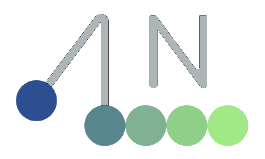newton.geometry.transform_inertia#
- newton.geometry.transform_inertia(m, I, p, q)[source]#
Compute a rigid body’s inertia tensor expressed in a new coordinate frame.
The transformation applies (1) a rotation by quaternion
qand (2) a parallel-axis shift by vectorp(Steiner’s theorem). LetRbe the rotation matrix corresponding toq. The returned inertia tensor \(\mathbf{I}'\) is\[\mathbf{I}' \,=\, \mathbf{R}\,\mathbf{I}\,\mathbf{R}^\top \, + \, m\big(\lVert\mathbf{p}\rVert^2\,\mathbf{I}_3 \, - \, \mathbf{p}\,\mathbf{p}^\top\big),\]where \(\mathbf{I}_3\) is the \(3\times3\) identity matrix.
- Parameters:
m (float) – Mass of the rigid body.
I (wp.mat33) – Inertia tensor expressed in the body’s local frame, relative to its center of mass.
p (wp.vec3) – Position vector from the new frame’s origin to the body’s center of mass.
q (wp.quat) – Orientation of the body relative to the new frame, expressed as a quaternion.
- Returns:
The transformed inertia tensor expressed in the new frame.
- Return type:
wp.mat33

